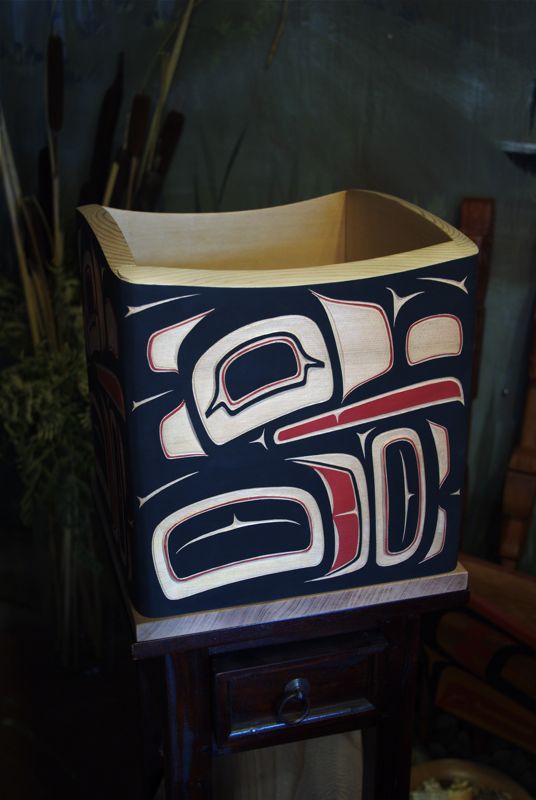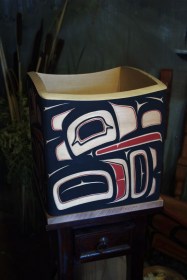 Bent wood cedar berry box with Raven design by Victor Michael West
Bent wood cedar berry box with Raven design by Victor Michael West
Bentwood Raven berry box


Bentwood Boxes
Making bent-wood boxes (also known as bent-corner boxes and kerfed boxes) is an art form that involves grooving, steaming and bending a single wooden plank of yellow or red cedar to form the sides of a box. The plank is adzed and smoothed to the desired thickness, according to the size of the box desired. It is then grooved with a sharp knife, in three equidistant cuts or kerfs, at right angles to the board. The board is then steamed, and as the wood softens, the board is bent along the grooves into right angles, forming a four-sided box. Three corners of the box are bent, while the fourth is tied, pegged, or (in more recent forms) glued. The bottom and lid of the box are generally made of red cedar, and added last.
The box is usually decorated with shallow relief carving and/or painting to bring out coastal designs. Artists also may inlay the bent surface with different types of shell or metal. Lids are generally left without decoration.
Bentwood boxes are valued possessions in any time period, but traditionally they were used to house wealth and ceremonial objects. The general practice was to keep the most treasured objects in the most finely carved boxes, while painted boxes might house the more mundane household items. Names are often given to these decorated boxes, and they often serve as heirlooms that communicate a family history.


